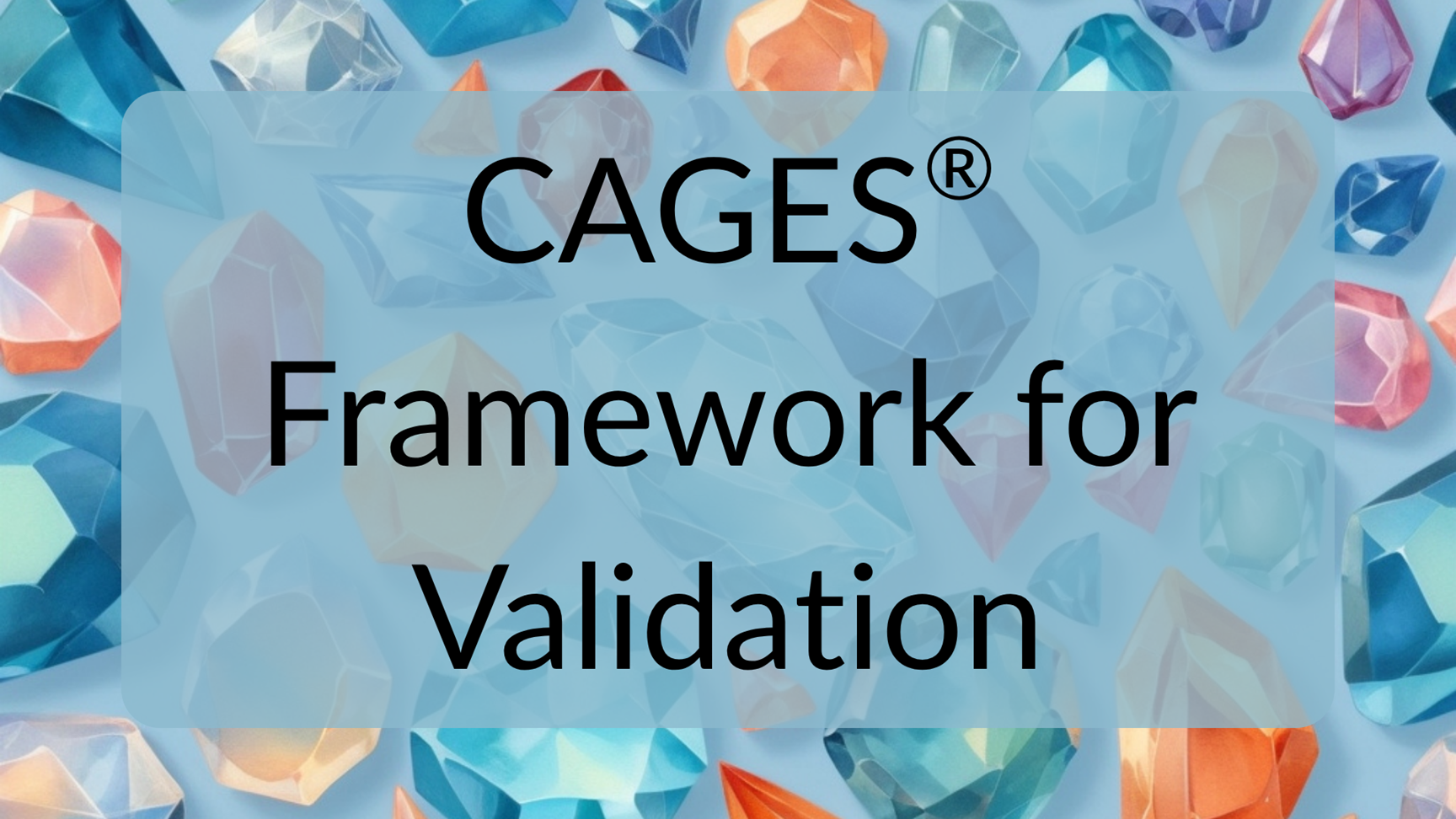When the Bird Gets In
After my corporate position was eliminated, I knew I still had more to offer. I had led validation efforts for decades, but I couldn’t carry forward the framework I had helped shape while employed. If I wanted to keep contributing to the field, I needed something new, and it had to stand on its own.
I went back to the original sources: guidance documents from the FDA, standards from professional organizations, and everything I had learned from real-world experience. The expectations told you what needed to happen, but they didn’t say much about how to make it all work. I realized that what was missing wasn’t knowledge. It was something to help it make sense to the whole team.
I started sketching out a framework that could bring clarity to the work without oversimplifying it. Something solid. Practical. Easy to teach. A word came to mind that captured it: CAGES. At first, it was just shorthand for the four essential steps: Claims, Approach, Gathering Evidence, and Summary. But the name stuck with me for another reason.
When I was four years old, I lost my mother. One of the few clear memories I still hold is from April Fool’s Day when she played a joke on my father. She told him a bird was in the basement. Because I was too little to follow them downstairs, I had to wait at the top of the steps. I still remember her calling out, “April Fools!” and me repeating it gleefully from above. My father was a young Army officer at the time, uniform and all, and he had rushed into action thinking there really was a bird flying loose.
It was just a joke. But if the bird had been real, the worry would have been justified. What could it knock over? Where would it leave a mess? How long would it take to clean up, and how much would it cost?
Fast forward to today, and I find myself working with people I admire; smart, capable professionals in the life sciences who I like to refer to as Medical Marvel Makers. They’re developing products that improve and extend lives. But they also have something to watch out for.
Their version of the bird? Let’s call it the Fregata Delandi Aldabra. Or for simplicity, the FDA.
Without warning, the bird slips into the facility, flaps through the process, and leaves behind uncertainty. No one knows how it picks its targets, but suddenly everyone’s trying to assess the damage.
What did it seek that was missing? What did it find that left it confused? How do we keep a bird like that from roaming freely through our systems?
CAGES®.
It’s more than a metaphor. CAGES® is a validation framework designed to bring clarity to your process before problems take flight. Here’s what each part of the acronym stands for:
Claims
Start by defining what the process or system is expected to do. This includes identifying which outcomes are essential and what counts as success or failure. Without a shared understanding of what you're proving, validation efforts can drift, and disagreements often emerge late in the project.
Approach
Once the claims are defined, decide how you’re going to prove them. That includes selecting the right test methods, identifying appropriate sample sizes, and applying the level of rigor that matches the risk. The approach should be practical, justified, and agreed upon before execution begins.
Gathering Evidence
This is where plans become action. Collect data, follow protocols, and ensure that every detail is documented. Context matters. So does consistency. This phase builds the factual record that supports your validation effort.
Summary
Finally, put it all together in a clear, logical, and audit-ready format. The summary should tell the story of what was done, why it was done that way, and how the results support your original claims. Auditors aren’t there to read minds, they’re there to read files. Make it easy for them to follow your thinking.
Today, CAGES® forms the foundation of two core services at Brayearst:
✅ Validation Training
We help teams understand not just the steps of validation, but how to think critically about risk, alignment, and documentation. Training programs are tailored for newcomers, cross-functional stakeholders, or teams looking to strengthen consistency across projects.
✅ Spot Check Reviews
Already have protocols or reports in place? Our structured assessments use the CAGES® lens to evaluate documentation for clarity, completeness, and audit readiness. It’s an efficient way to get expert feedback without overhauling your entire system.
Whether you're designing a new process, preparing for inspection, or trying to reduce rework, CAGES® offers a structure to support your success.
And it just might keep the bird from causing trouble.
If you'd like help applying the CAGES® Framework to your team’s validation process, I’d be glad to talk.
📅 Schedule at meet.brayearst.com



